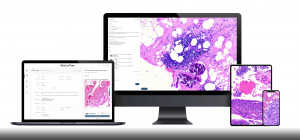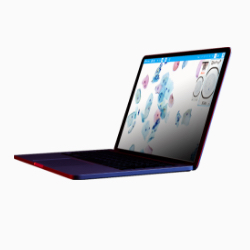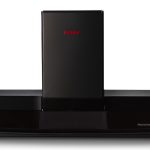To understand how much ‘magnification’ a scanner provides, we need to start with an understanding of two similar, but very different, concepts of optics: magnification and resolution.
Magnification is how big something looks.
Magnification by itself is relatively straightforward. If you start with something that is physically, for instance, 1cm x 1cm, and you see an image of it that measures 4cm x 4cm, then it has been magnified 4x. Magnification is the simple ratio of the final size of the image to the original objective.
For magnification alone, presentation projectors are fantastic since they can project the image to any magnification you choose. If you want a larger image, simply move the projector farther away from the wall, and presto! You’ve just increased your magnification and created a larger image!

Hi Box! Meet the 4x magnified version of you.
Resolution is how much detail you can see.
Resolution used to be a slightly trickier topic to tackle, until digital single-lens reflex cameras (DSLRs) and smartphone cameras became mainstream. Remember how your flip phone camera couldn’t tell your face from your friend’s? The reason was the low resolution. The way cameras these days seem to inconveniently pick up that bit of stray lint on your jacket, meanwhile? That’s due to the high resolution.
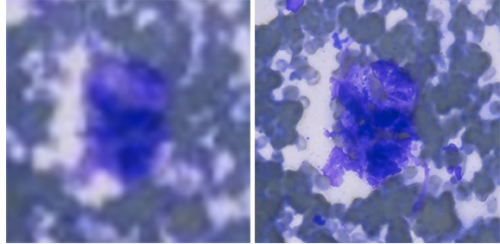
1.5 MegaPixels vs 15000 MegaPixels
Combining the concepts of magnification and resolution, you get the core challenge of optics: magnification is only meaningful if blowing something up allows you to see more detail. Returning to our projector example, you could enlarge the projector image to the size of a house, but you would still be stuck with the 240p resolution of the projector. So all you’ve done is make a small, blurry image into a very large, but still very blurry image.
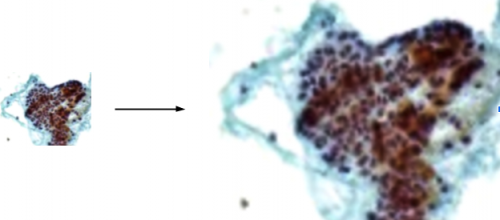
Meaningless magnification
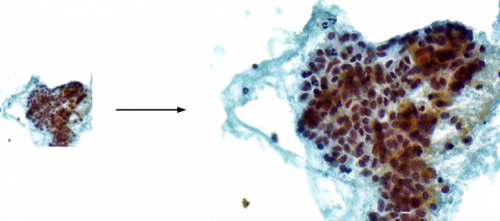
Meaningful magnification
How does this tie into Objective Magnification and my Scanner Magnification?
When you look at a microscope objective, there are actually two numbers you need to use to describe the full specifications: magnification power and numerical aperture (NA). Microscopes were originally designed for humans to look through, so every objective was labeled with its magnification power, which would tell you how big the sample on the slide would look to you when viewed through the microscope. It’s mostly a relative measurement, similar to our projector ‘magnification’.
Numerical aperture, on the other hand, is a physical optics measurement that tells you how much resolution the objective will give you. This very rarely matters in a traditional microscope since the resolution of the objective is almost always higher than what your eye can pick out from the eyepiece at that magnification. The resolution of your eye is the size of the light receptors in your retina. With a recording camera, however, the numerical aperture becomes far more important than the magnification, since cameras these days can have double or triple the resolution of the human eye.
For example, if we had a camera with double the resolution of a human eye, we would not be able to see all the details captured by the camera unless we magnified the image by 2x. When magnified, we would be able to get an extra 2x meaningful magnification just from using the camera.
Essentially, with a high enough NA objective in a scanning system and a good enough camera, the labeled magnification of the objective is more or less meaningless. Motic’s standard 20x scanning objectives are designed to have a NA of .75, which is the numerical aperture typically specified for human-viewing 40x objectives. Our recording camera takes full advantage of the extra resolution provided by the objective, and so it is able to produce a scanned image at 40x resolution.
We never say 40x magnification, and now you know why!

